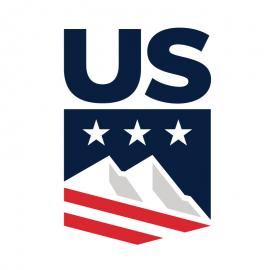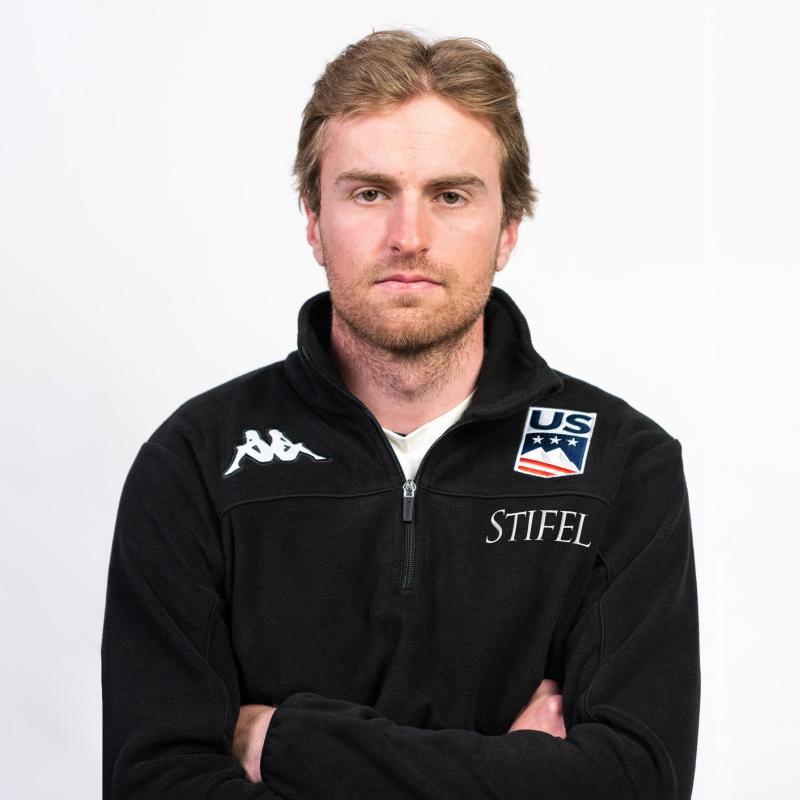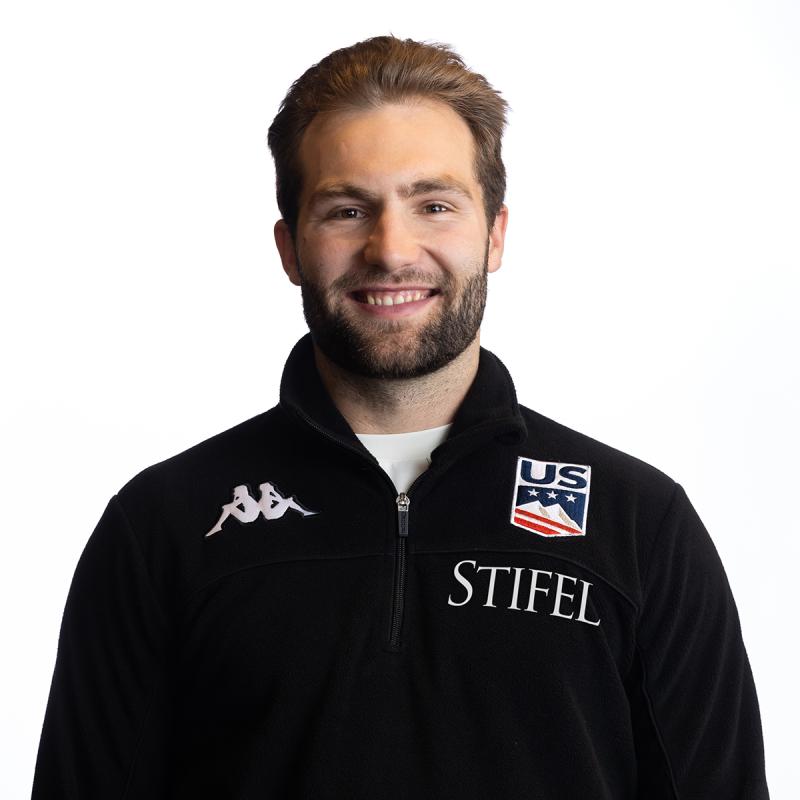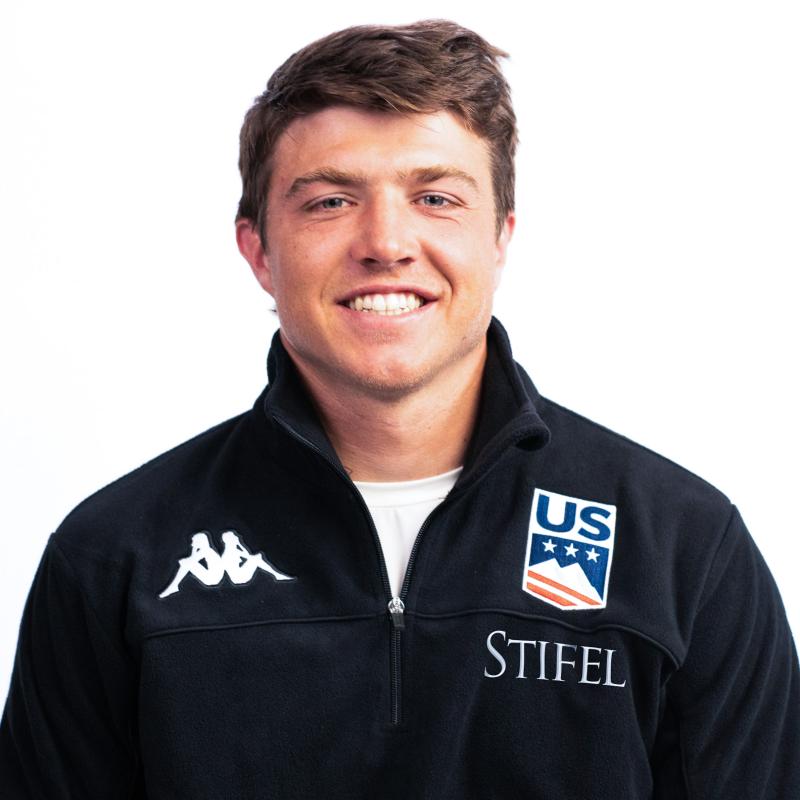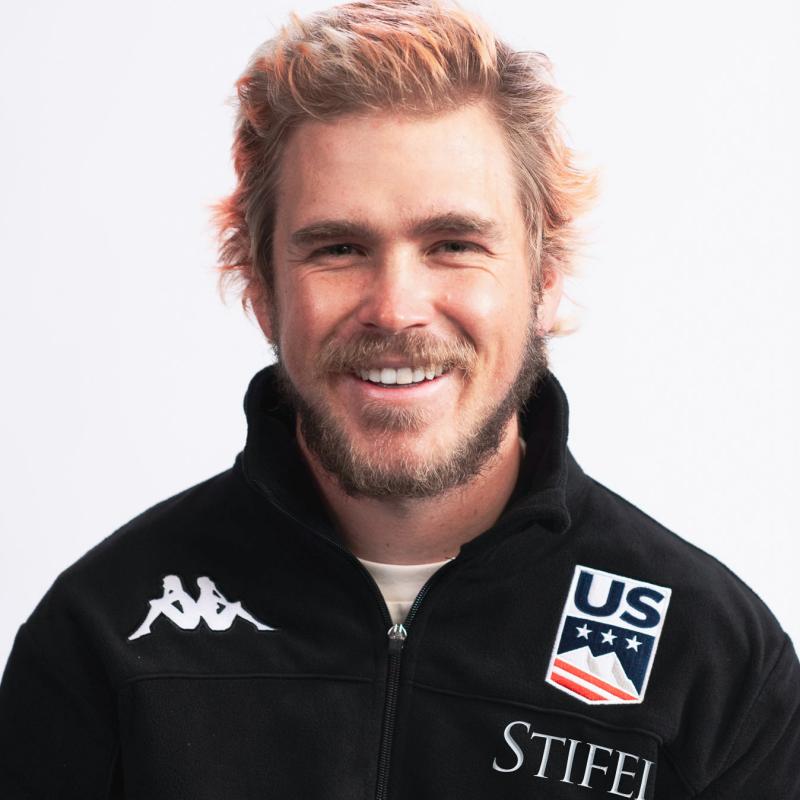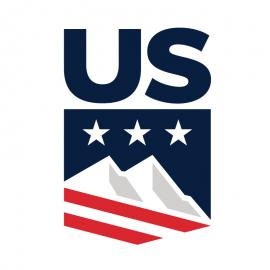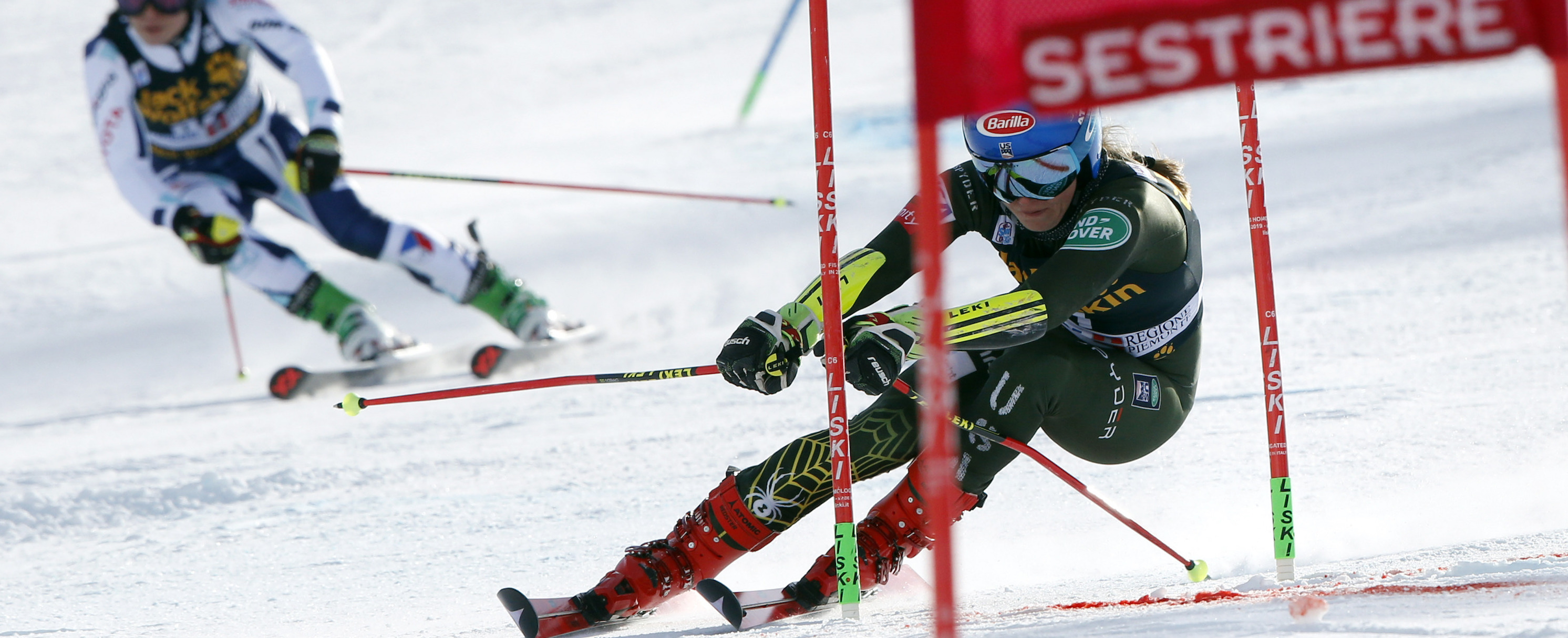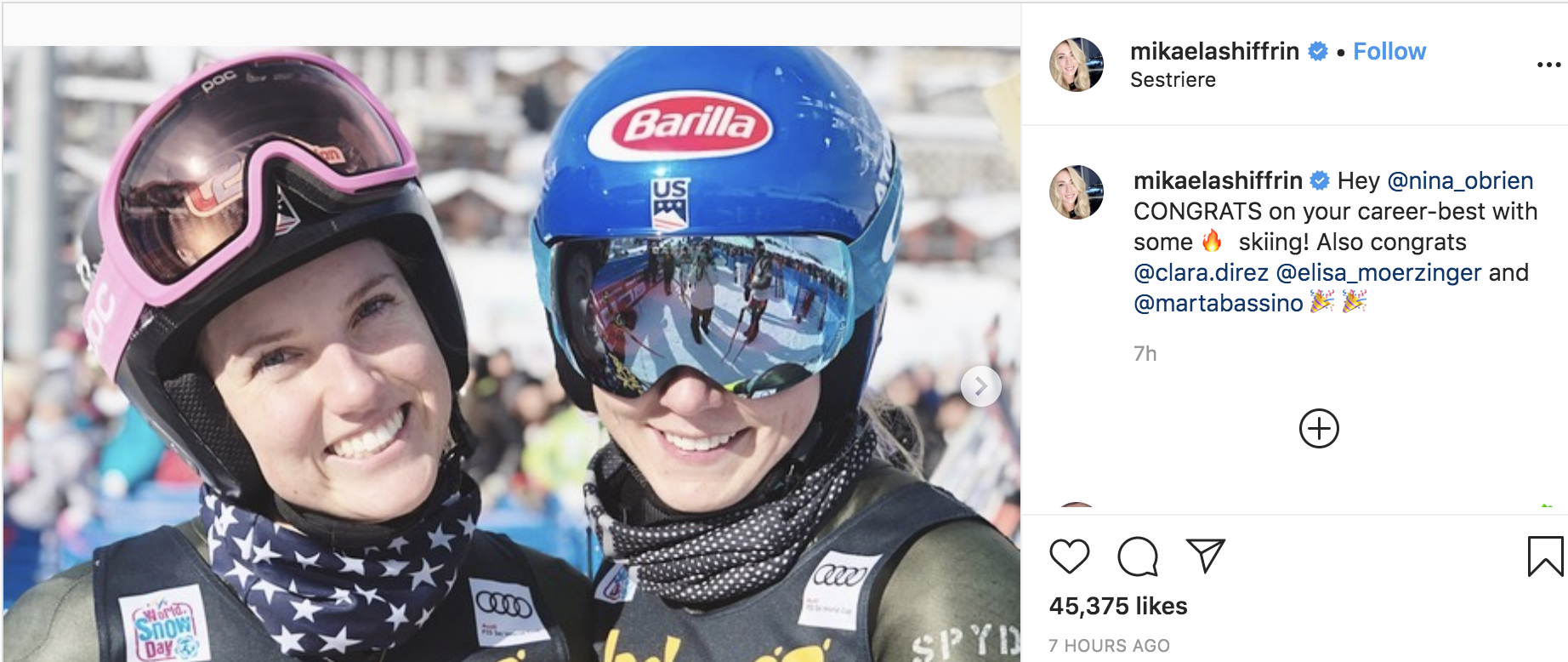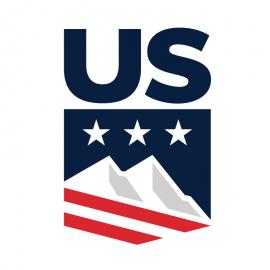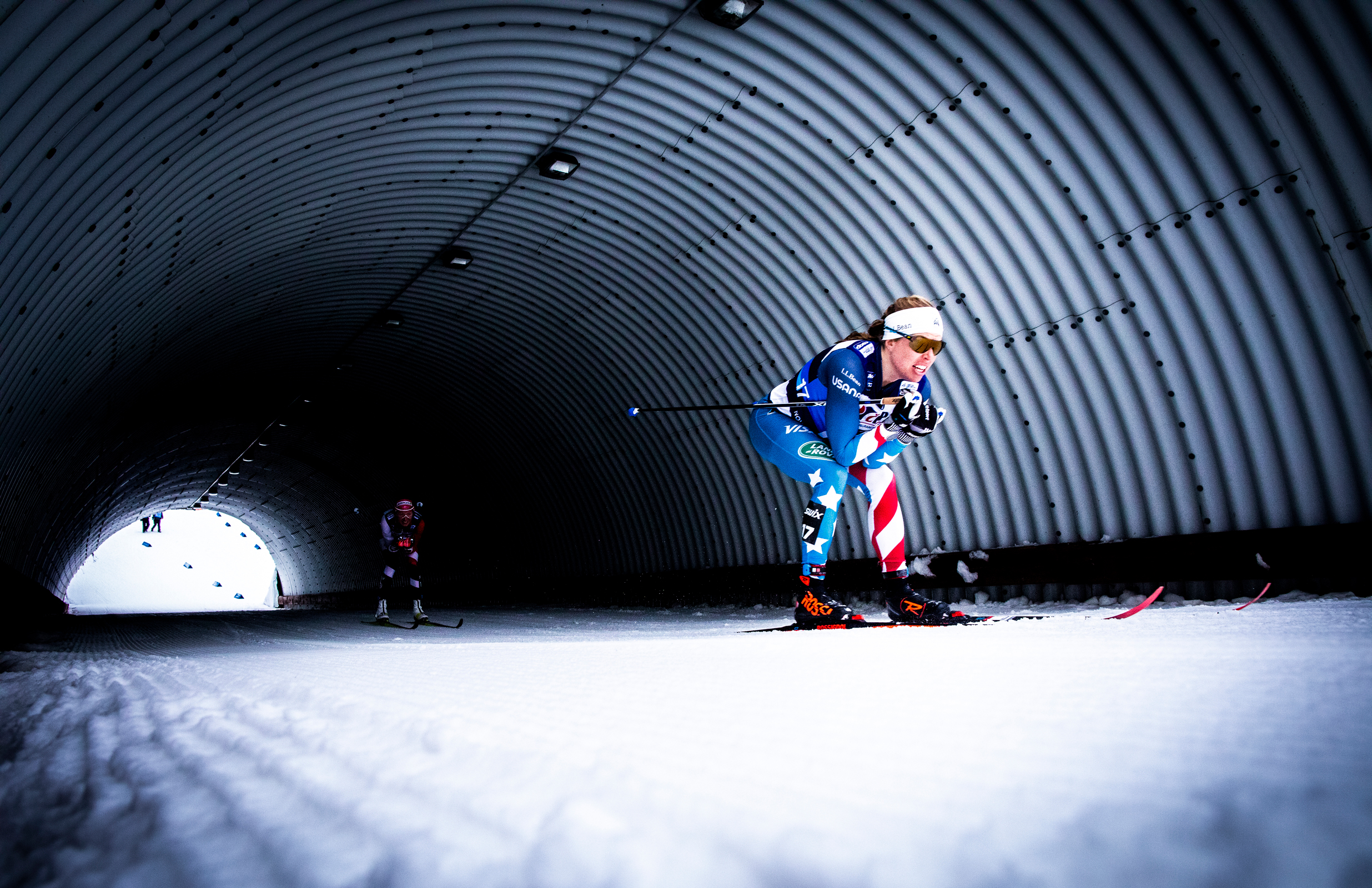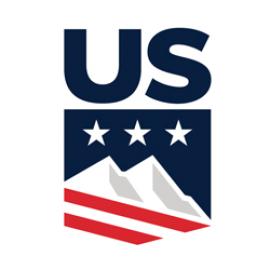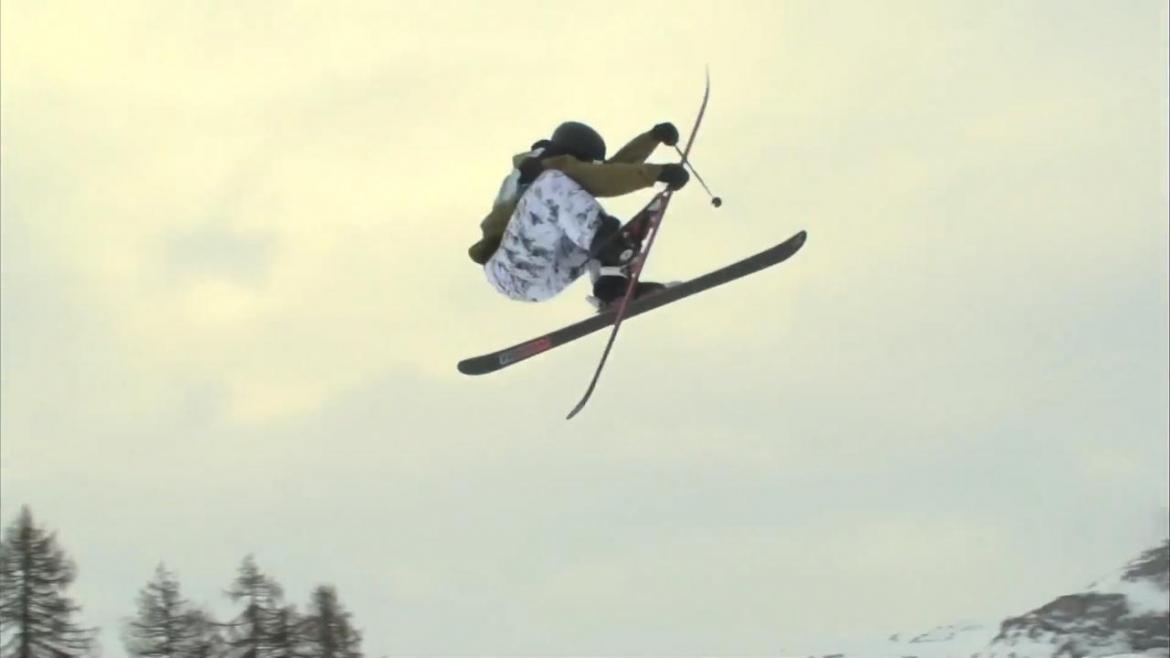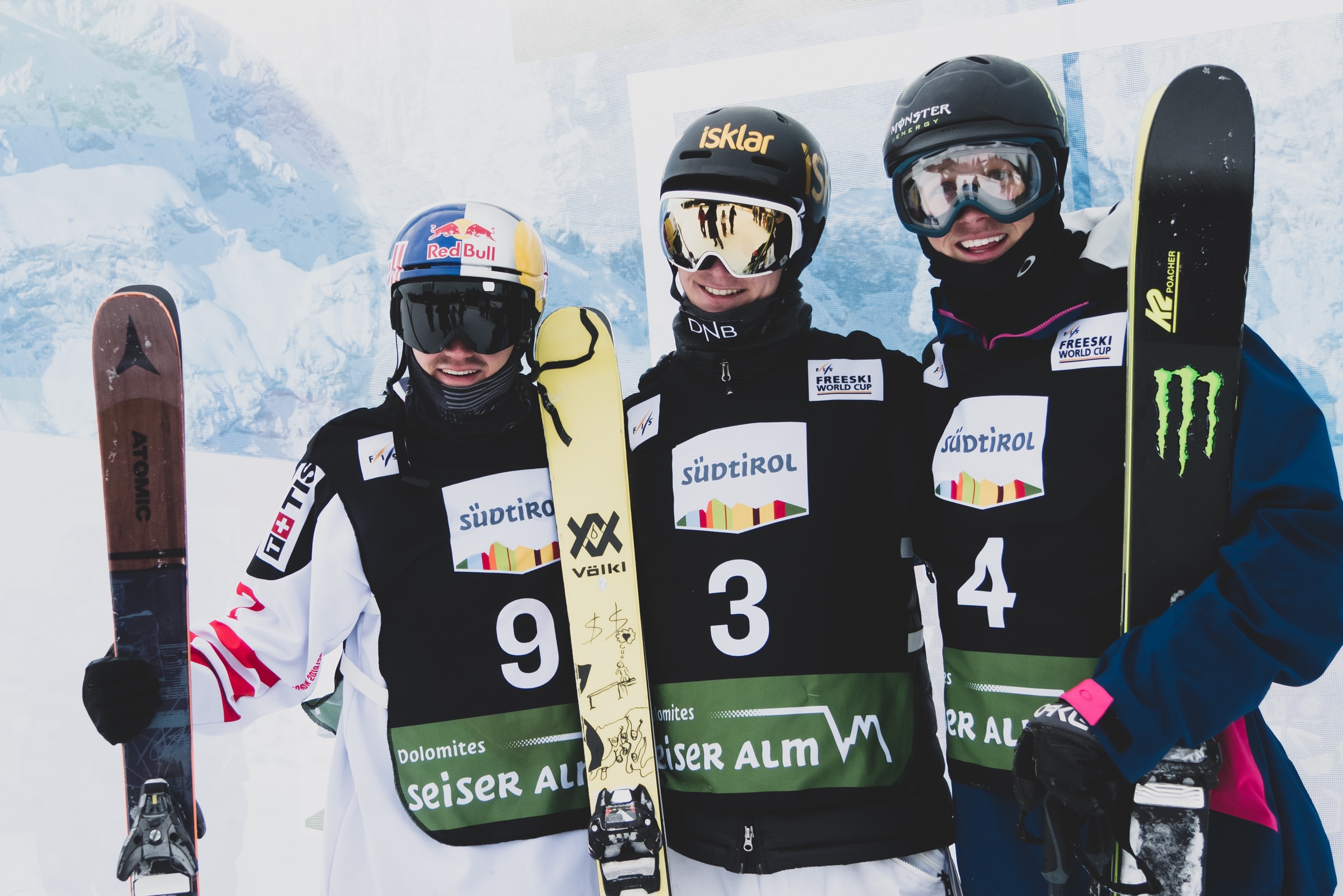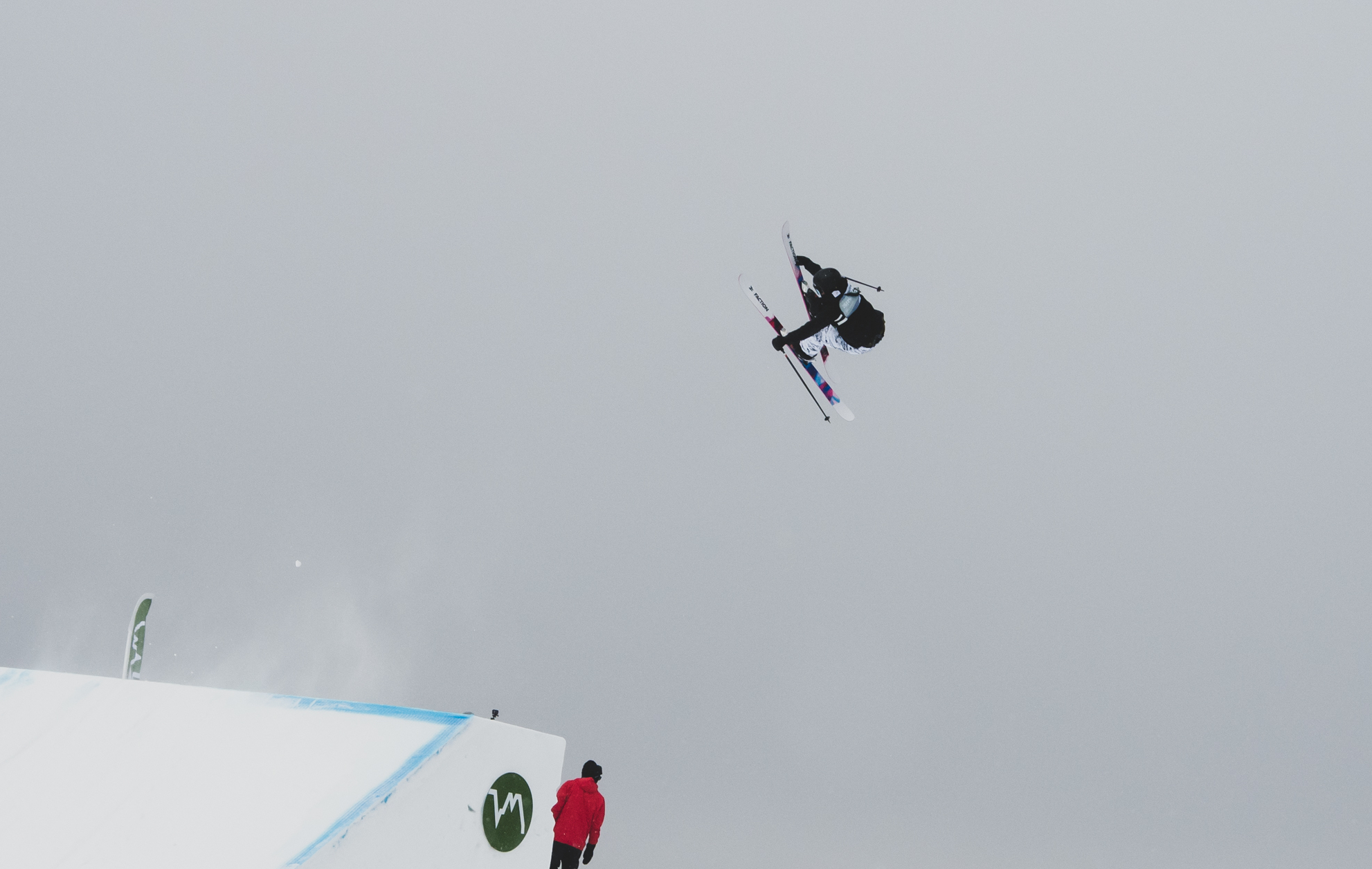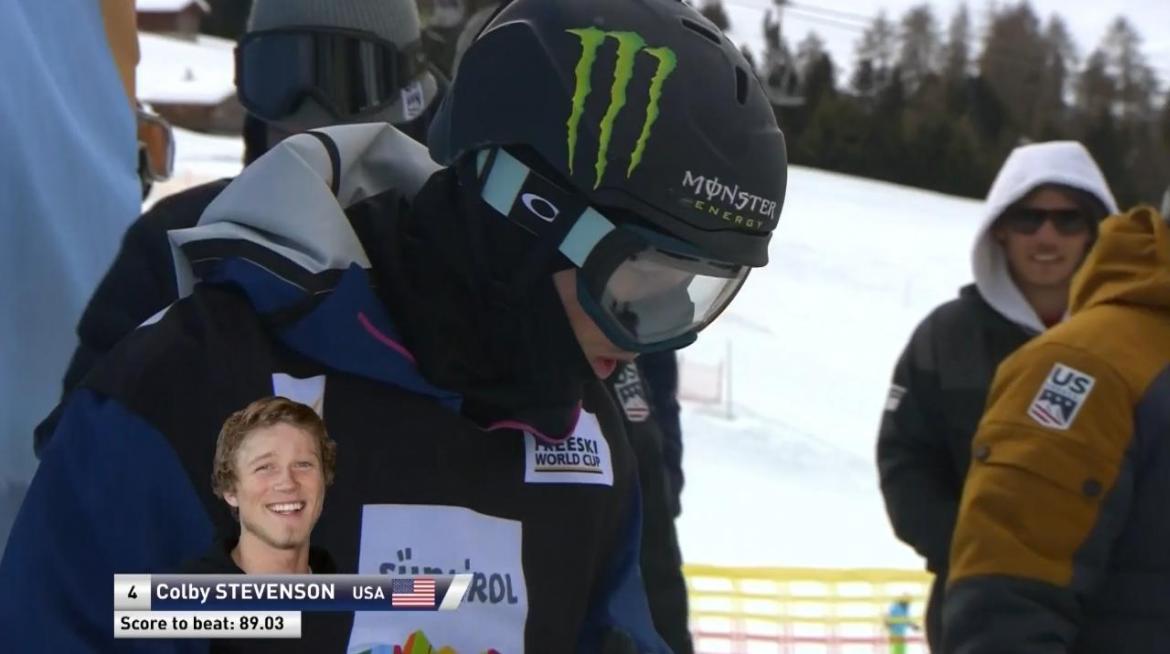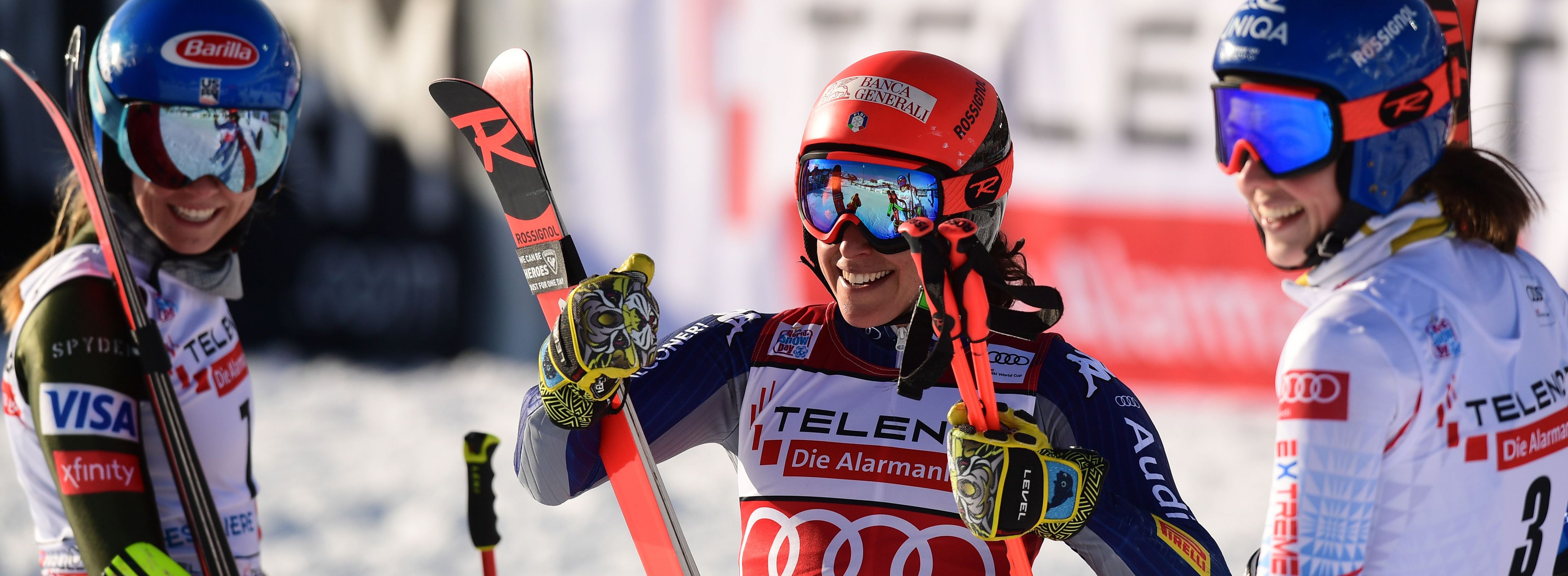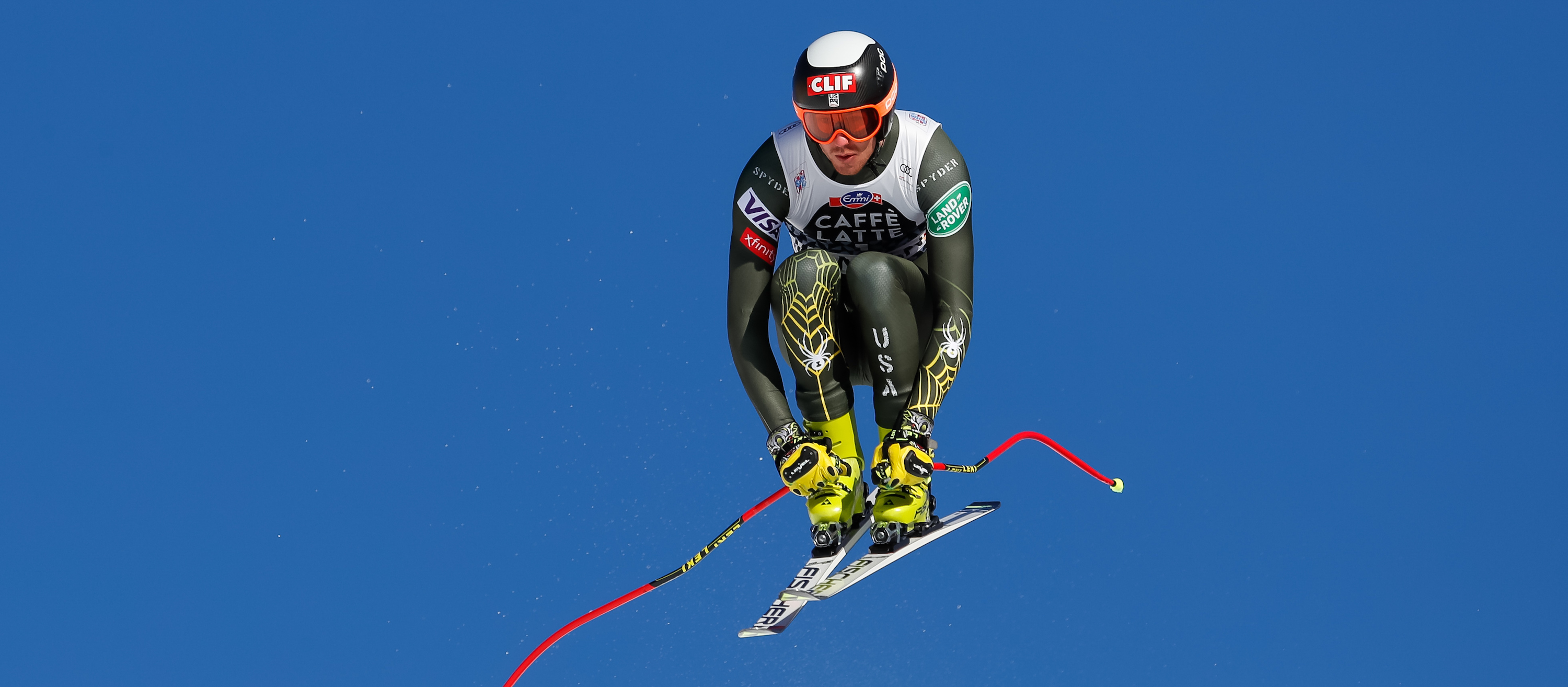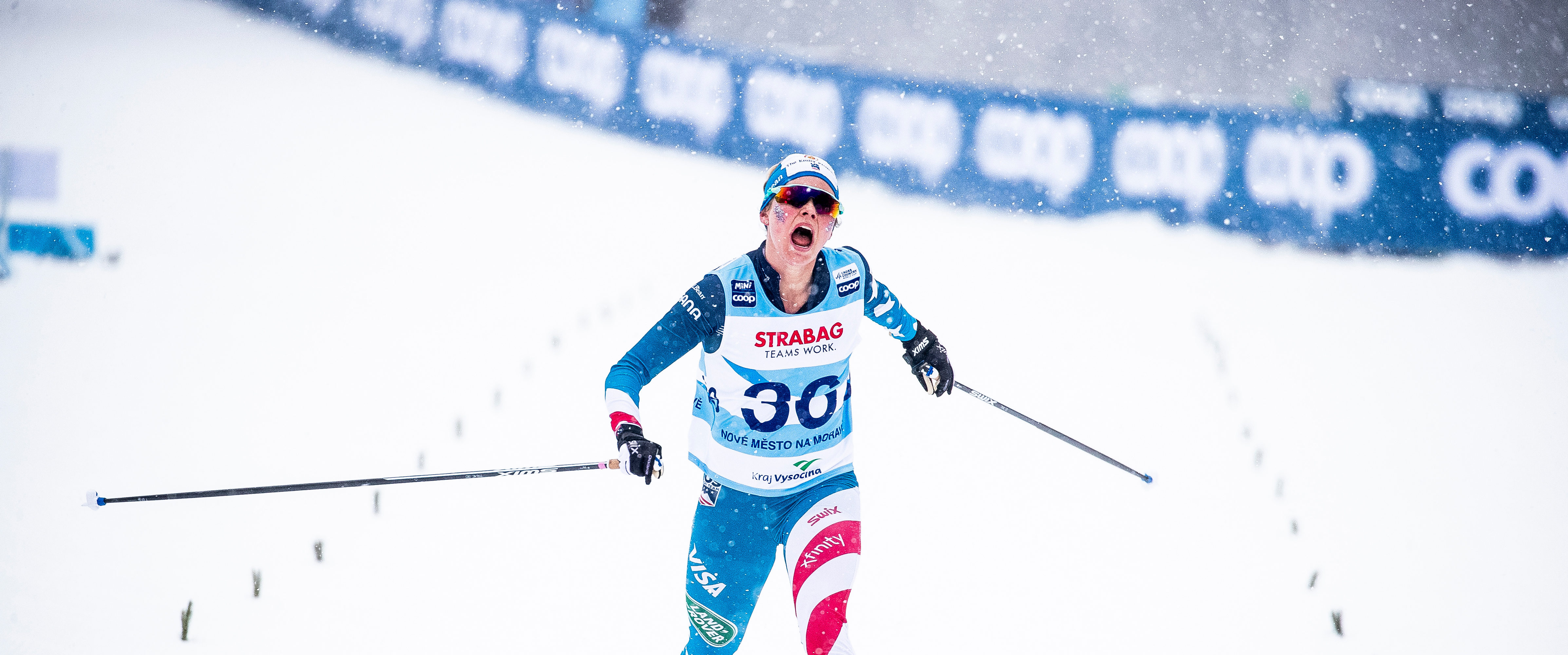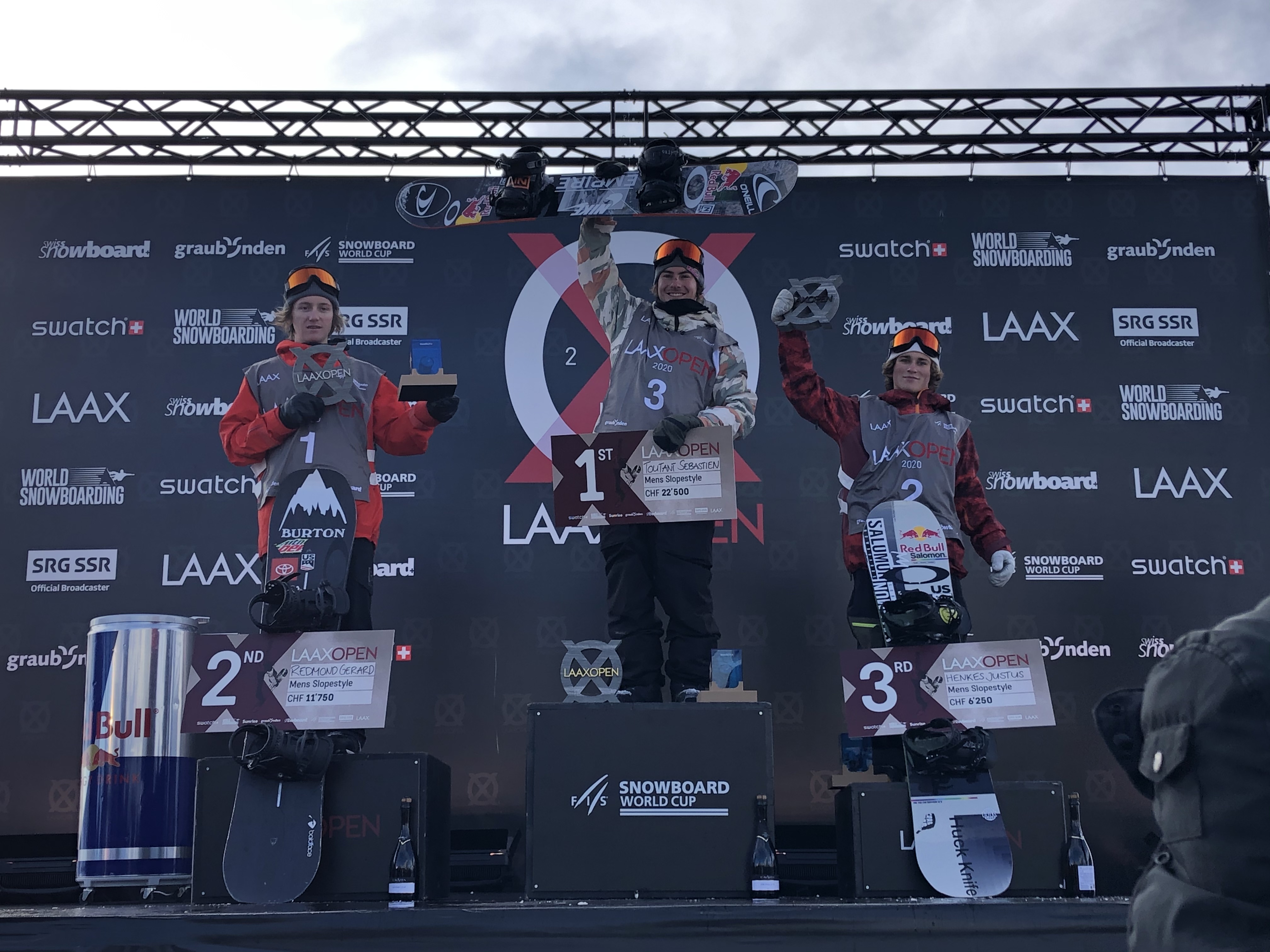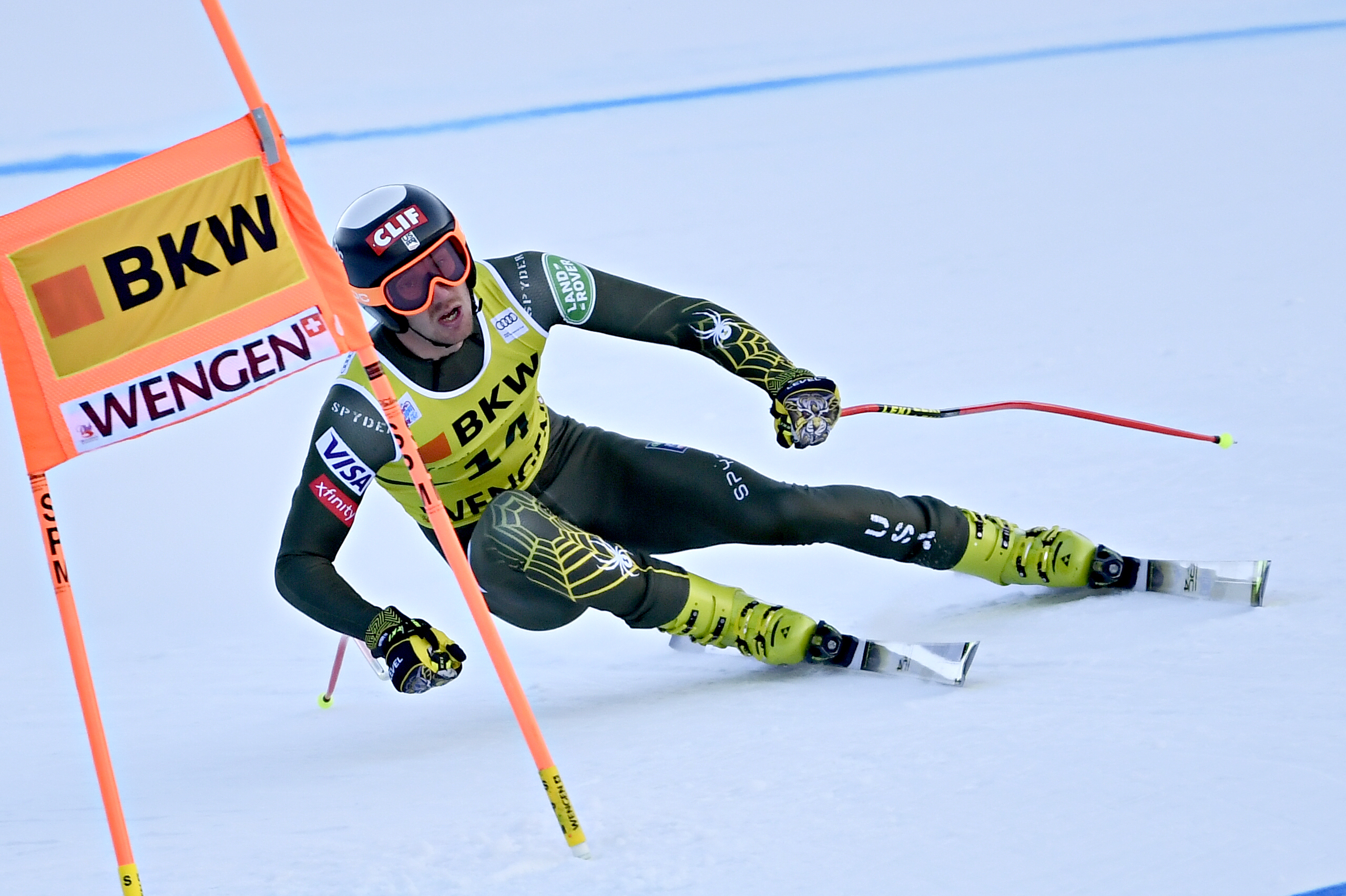Slalom Wraps Up Wengen Weekend
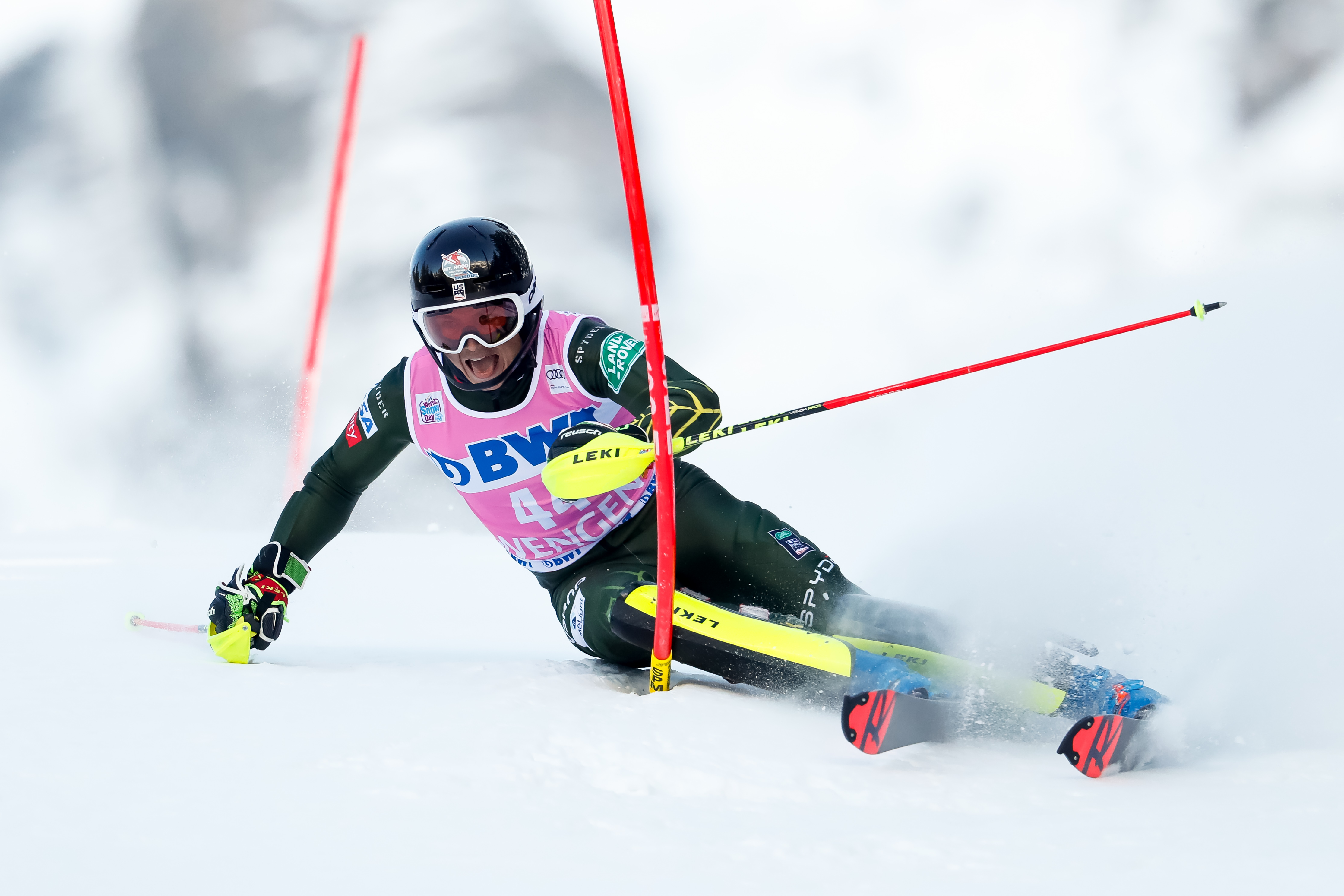
The men finished out the weekend in Wengen, Switzerland with a slalom on one of the trickiest tracks on the FIS Ski World Cup circuit. The Land Rover U.S. Alpine Ski Team men had a tough day, with no Americans qualifying for a second run.
Clement Noel of France started first and never gave up the lead, taking another win on the track where he had his first World Cup victory last season. Henrik Kristoffersen of Norway finished second—his third World Cup slalom second-place result in a row—and Alexander Khoroshilov of Russia was back on the podium in third.
Starting bib 44, the light turned green in the first split for Luke Winters, showing an early lead for the young skier who has had a number of impressive moments so far this season. But he struggled over the pitch—getting low on his line before straddling and DNFing.
“I was happy with how I went out of the gate,” said Luke. “Especially with my second run at Adelboden—not really pushing like I needed to—I thought I did that today. But I didn’t change gears coming over the pitch and lost it from there down. That said, I’m happy with it. It’s my first time on the hill—there’s a lot to learn here.”
Wengen is a difficult track with all kinds of terrain changes including steep pitches, rolls, side hills, and flats, making it difficult to find a rhythm. The fact that Luke was leading at the first split on his first attempt on the hill is a promising threat of future success. “I know I’m fast. I know I can ski well and keep up with those guys,” said Luke. “I just have to find that gear. There are things I learned today—like coming over that pitch: You gotta change gears. You’re not going to win it on the pitch because it’s so steep… I tried to bring the intensity on the pitch and didn’t need to.”
Land Rover U.S. Alpine Ski Team slalom coach Ryan Wilson agreed with Luke. “Green light again and then Luke went out, but we are happy with his fast skiing and setup,” Ryan commented. “We are in great spirits, as he was fast as heck before he went out.”
Ben Ritchie finished the first run, but had a few mistakes and did not qualify for a second. Kyle Negomir and River Radamus did not finish their first runs.
The men’s slalom team is heading to the Land Rover U.S. Alpine Ski Team's official training base in Folgaria, Italy for a few days of training before attacking the two wildest slaloms on the tour: Kitzbuehel and Schladming. And these young guys are excited to see the culture at the two storied races.
“I’m looking forward to the scene,” said Luke of Kitzbuehel. “I think it’s going to be crazier than anything I’ve done so far in my ski racing career, so that’s going to be exciting. But also the track—it’s so crazy and so many rolls. My family is coming and there’s going to be a lot of people there supporting me and watching me.”
The men’s speed team starts downhill training at Kitzbuehel on Tuesday with a super-G kicking off the races on Friday. The slalom takes place on Sunday.
RESULTS
Men’s Slalom
FOLLOW US ON SOCIAL
Instagram
Facebook
Twitter
Official event hashtag: #lauberhorn
HOW TO WATCH
All Times EST
Sunday, Jan. 19
5:00 p.m. - Men’s downhill, Wengen, SUI - NBC**
9:00 p.m. - Men’s slalom, Wengen, SUI - NBCSN*
*Same-day broadcast
**Next-day broadcast
Note: All televised events to stream across NBCSports.com, NBC Sports app, OlympicChannel.com, and Olympic Channel: Home of Team USA app.
Exclusive commercial-free coverage will be available for subscribers of the NBC Sports Gold Pass, available here: https://www.nbcsports.com/gold/snow.
